Building date: 1839
Original use: Blacksmith shop
Corner structures: fairly regular, except in thickness
Mortar application and content: Vertical heavy. Horizontal mortar between rows is pointed, and the vertical mortar is also pointed and is cut off from both the upper and lower horizontal.
Types and uses of stones: Stones are variable in color and are fairly large, and are laid three rows to the quoin on the front and sides.
Types and choice of windows: Wood lintels
Structures with similar masonry details:
Masons who worked on building:
Unique features:
Map views courtesy Google Maps. Google Maps street level view is not available. Address is Google Earth confirmed; 42°59'41.69"N 77°52'48.79"W. Current owner of record, Genesee County Village and Museum as of date (YMD) 190321.
Town of Wheatland and Monroe County Maps
The blacksmith was the first tradesman to set up shop in the emerging village. He supplied goods and services basic to the welfare of any early community, large or small. Every village and hamlet had at least one blacksmith.
The smithy shod horses, made hardware, and repaired wagons and plows - everything of iron that the farmer or the villager could not repair himself. His trade was often combined with that of the wheelwright, with whom he might collaborate in making wagons and carriages.
Levi Rugg, whose shop is now at Genesee Country Historic Village, was engaged in the two related occupations - smithing and wagon repair. His wagon shop was handy to the cobblestone blacksmith shop, then owned by blacksmith William Bradley Rugg's own shop was across the street from Bradley's. This congestion of competing enterprises was common in the world of the blacksmith and illustrates some of the economics of the early 19th-century village. There may not have been a blacksmith shop on every corner, but in the average village there were more blacksmith shops than cobbler shops. Rugg eventually purchased the cobblestone shop, moved his operations into it, and ran a general blacksmithing business there until his death in 1875. Two succeeding smiths worked in the shop until well into the 20th century.
Rugg's shop from Elba represents a unique regional architectural expression - the cobblestone building. Inside walls are of rubble masonry.
The blacksmith shop now in the Genesee Country Museum originally stood on Mechanics Street in the town of Elba in Genesee County. The quoins are fairly regular, except in thickness. Stones are variable in color and are fairly large, and are laid three rows to the quoin on the front and sides. Horizontal mortar between rows is pointed, and the vertical mortar is also pointed and is cut off from both the upper and lower horizontal. Roudabush Survey page 67.
The Levi Rugg blacksmith shop was originally located on Mechanic Street in the village of Elba. It was built in 1839 and operated well into the 20th century. In 1976 it was dismantled and reconstructed at Genesee Country Village museum near Mumford, N.Y. It was reconstructed with cinder blocks and then the cobblestone facing was placed on the exterior and the interior. The original joint work was not reproduced. The original west wall cobbles were collected separately from the east, south and north walls. Each wall's cobbles were put up on their respective original faces but obviously in their original exact rows or location on each wall. The interior cobbles were just put up where convenient and are naturally un-coursed, just like a barn foundation. The core of the wall is cinder block. Richard Palmer blog.
Blacksmith Shop, Genesee Country Village. Scroll down to view the Blacksmith Shop article.
"Cobblestone Examples Noted in Genesee Recall Construction Over Century Ago
Gathering Stones Together, courtesy the Tom The Backroads Traveller blog. Photographs number 1 and 13
- "Cobblestone Masonry", 1966, Carl Schmidt: Name reference, Blacksmith Shop
- Page 26
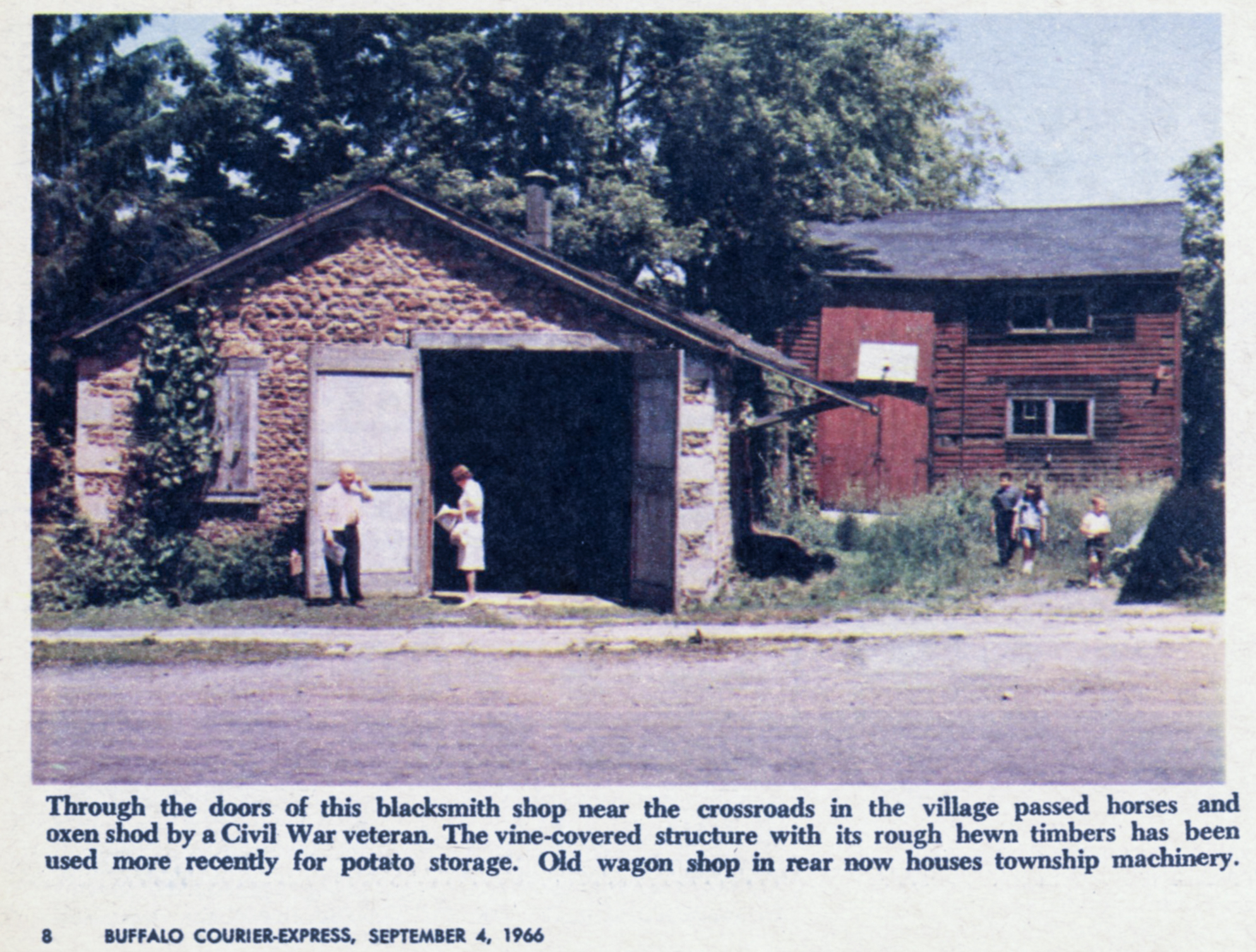 Genesee Country Museum 1.jpg ¹ 10/4/1966 Original location Mechanic St. Elba NY | 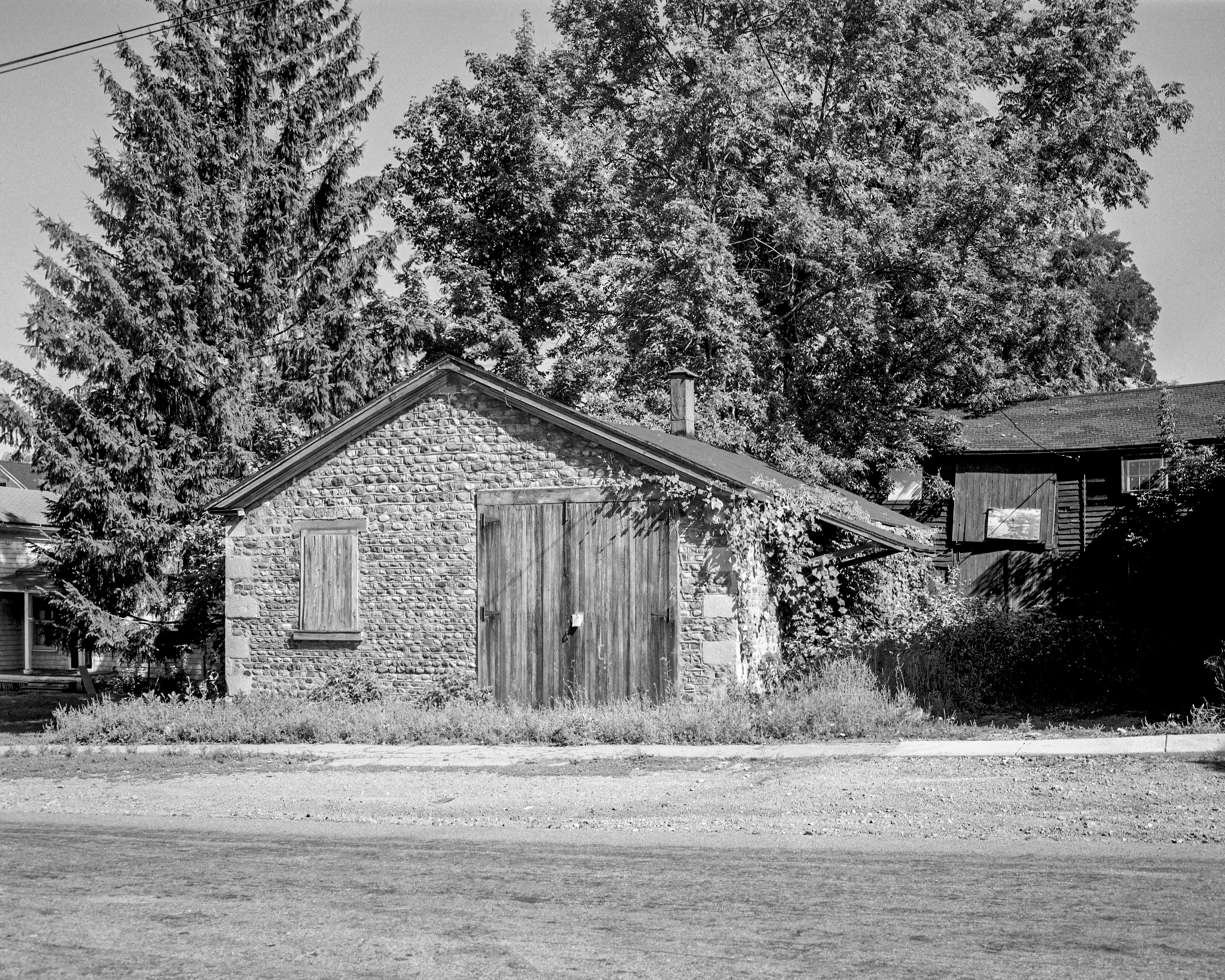 GP Genesee Wheatland Whe-8_1 N.jpg ² | 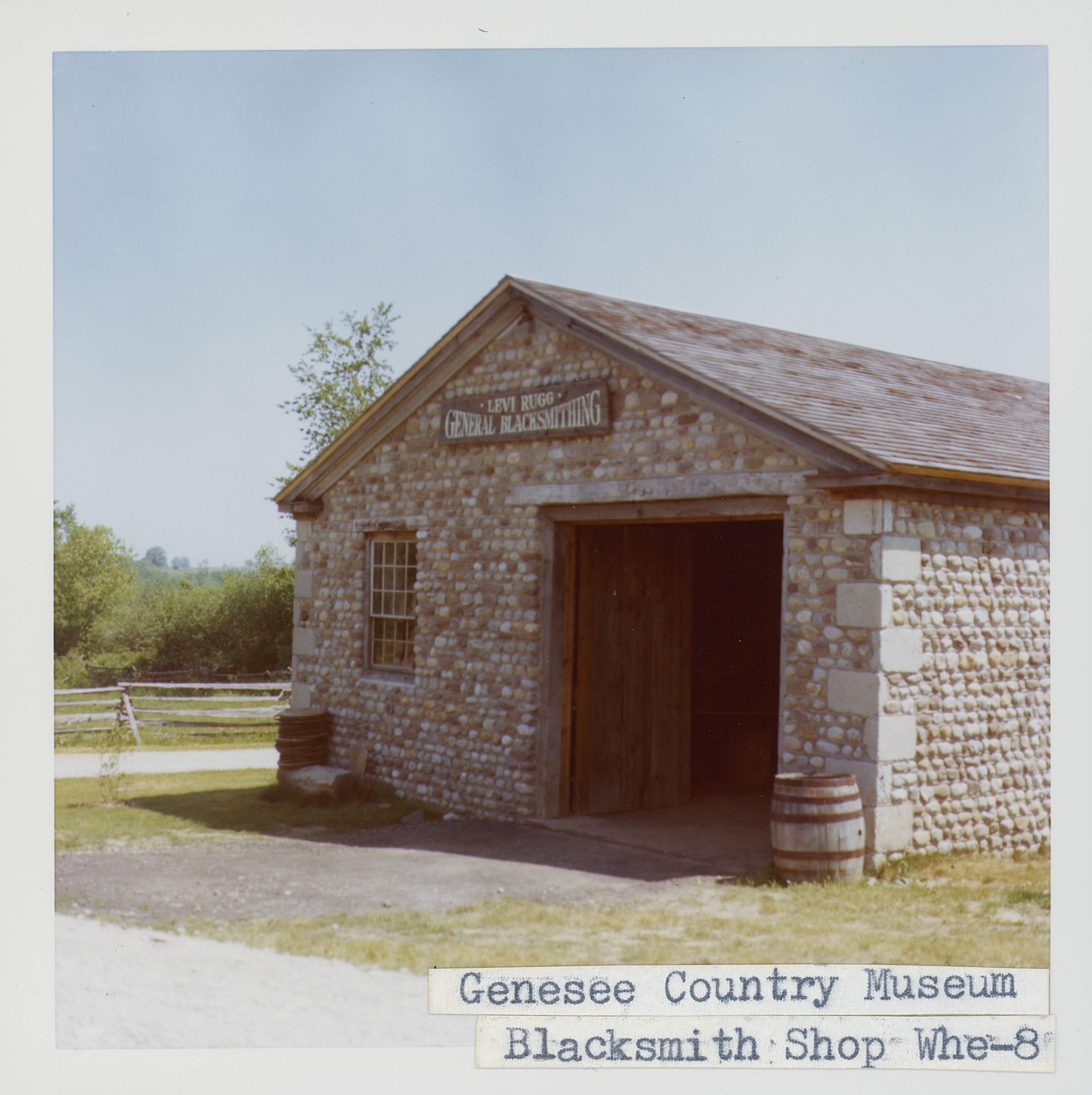 Whe_8_1.jpg | 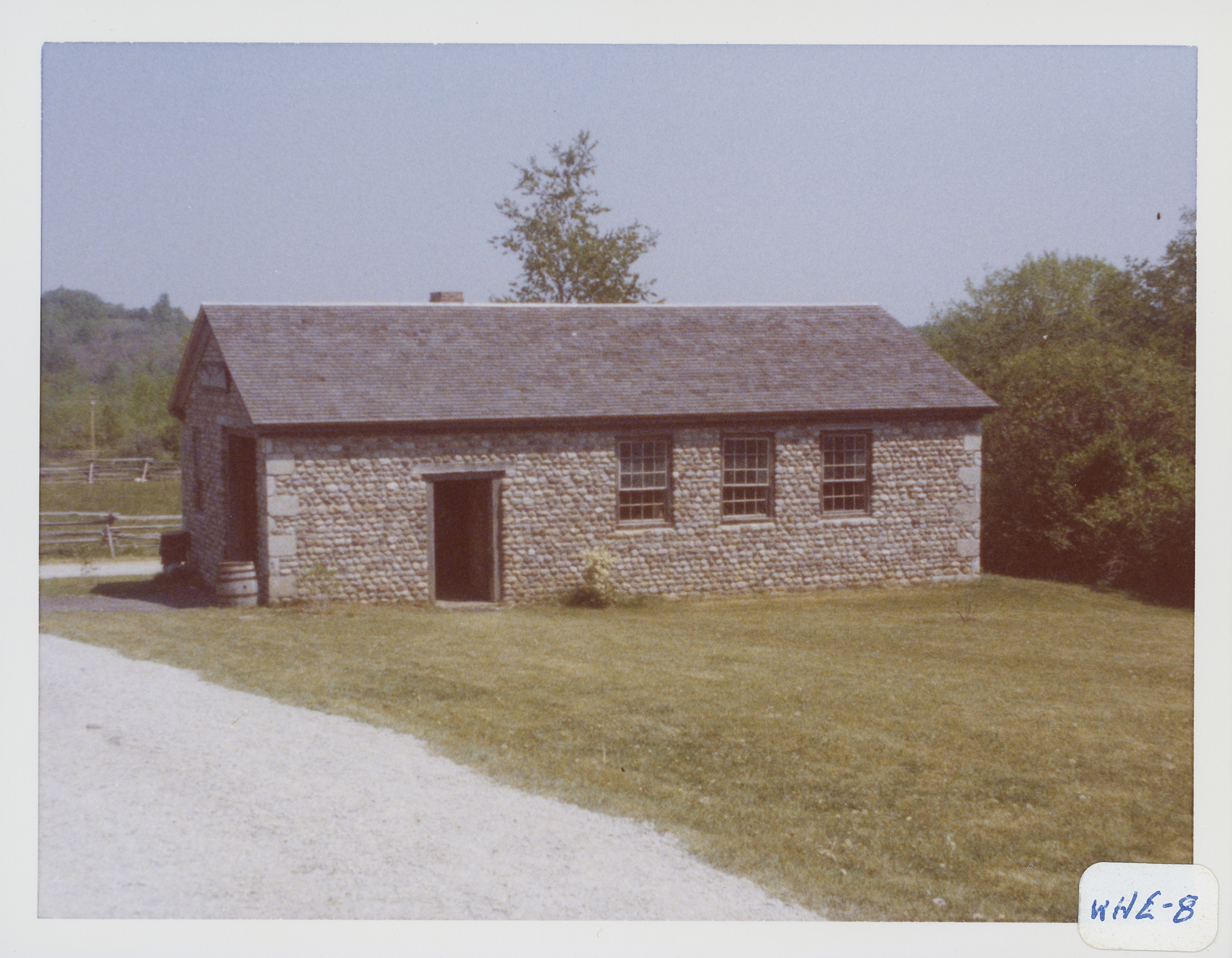 Whe_8_2.jpg |
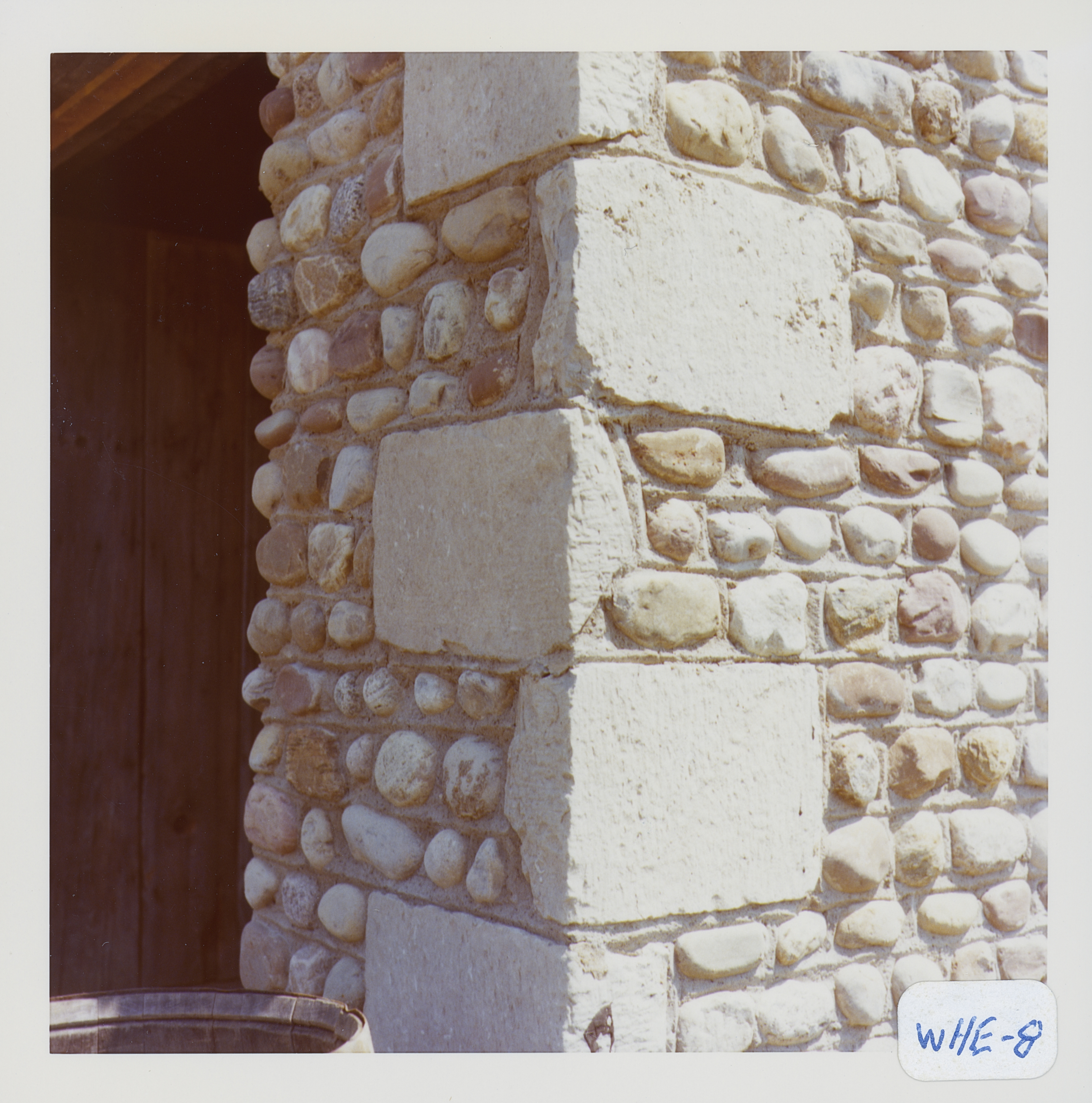 Whe_8_3.jpg | 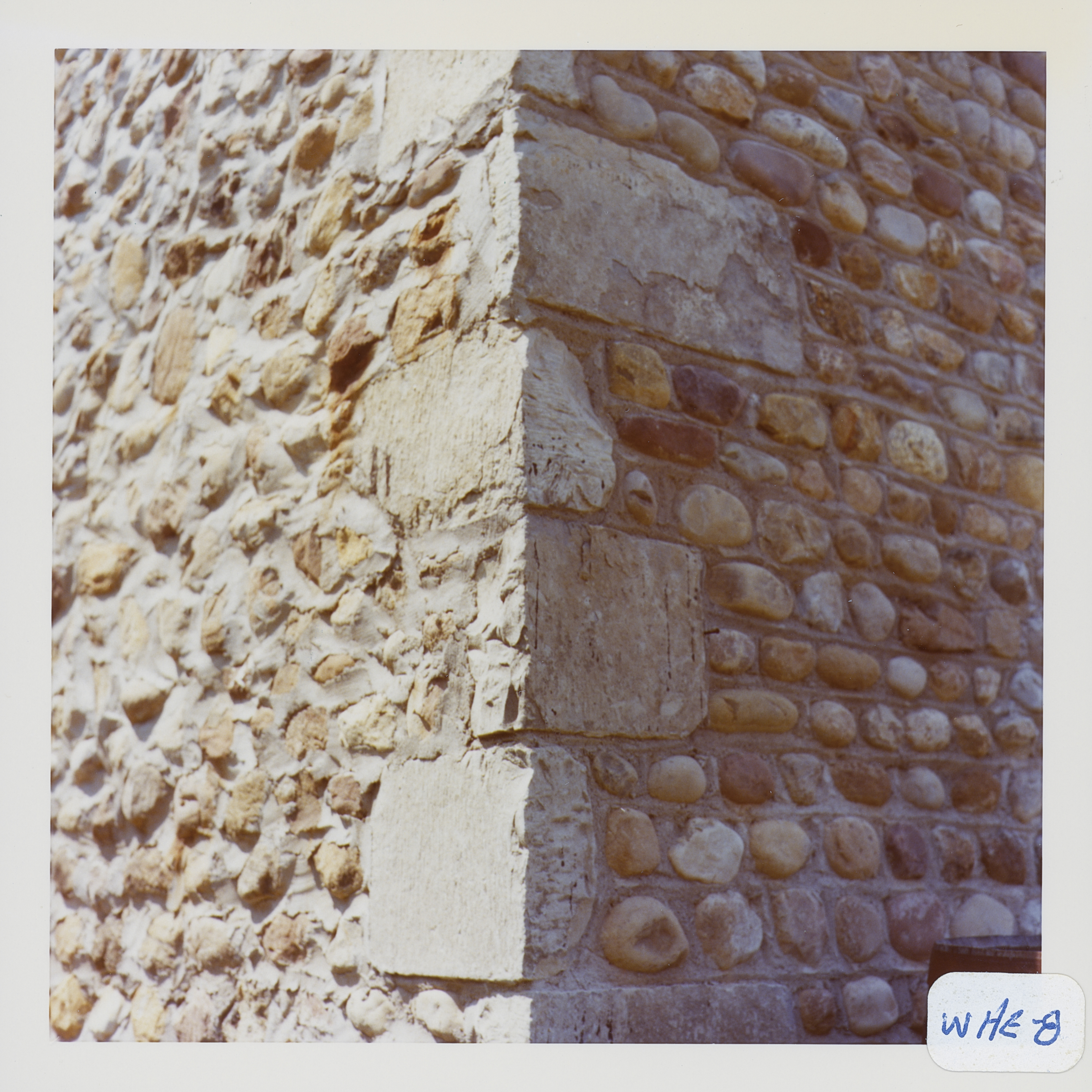 Whe_8_4.jpg | 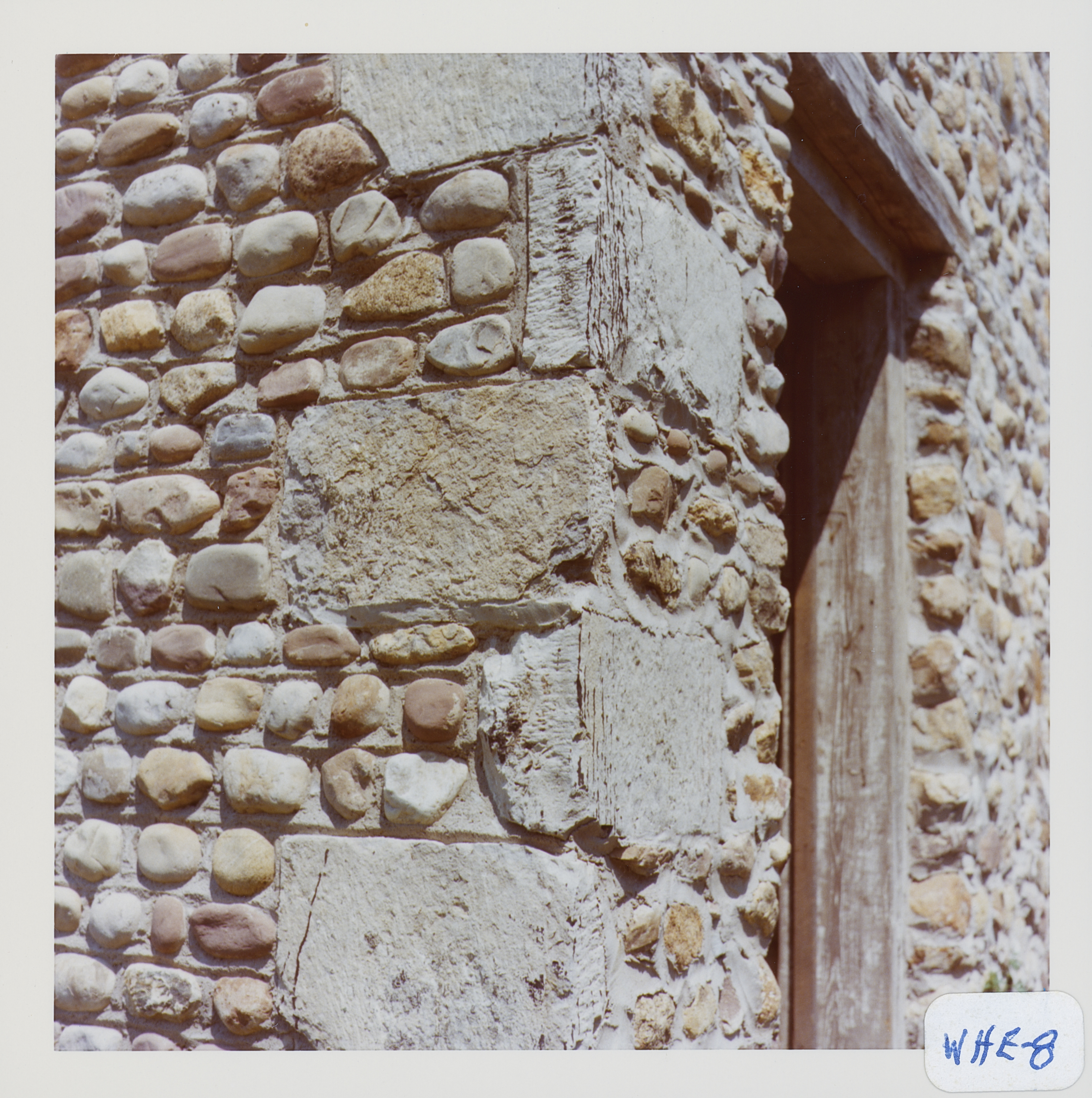 Whe_8_5.jpg | 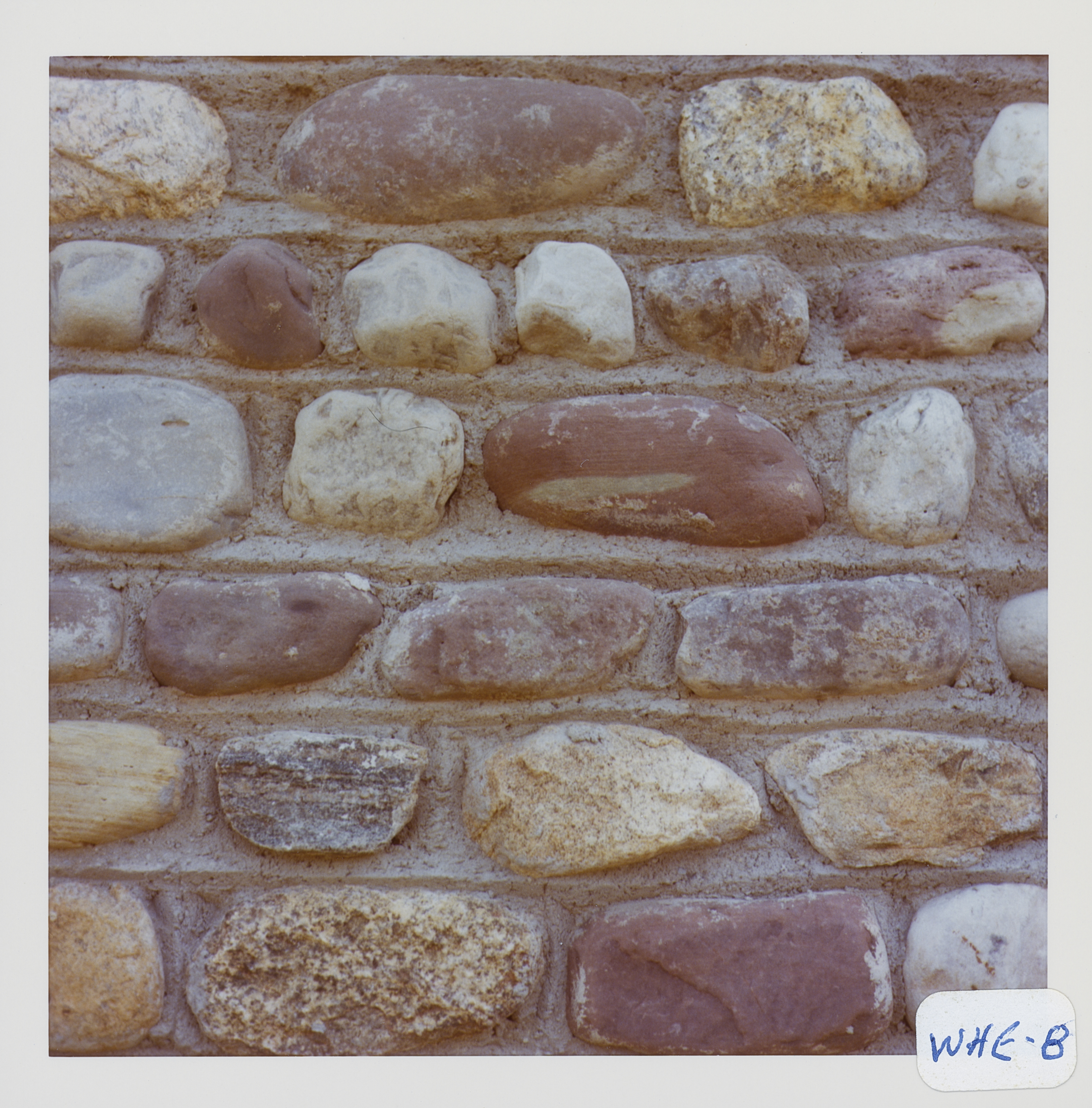 Whe_8_6.jpg |
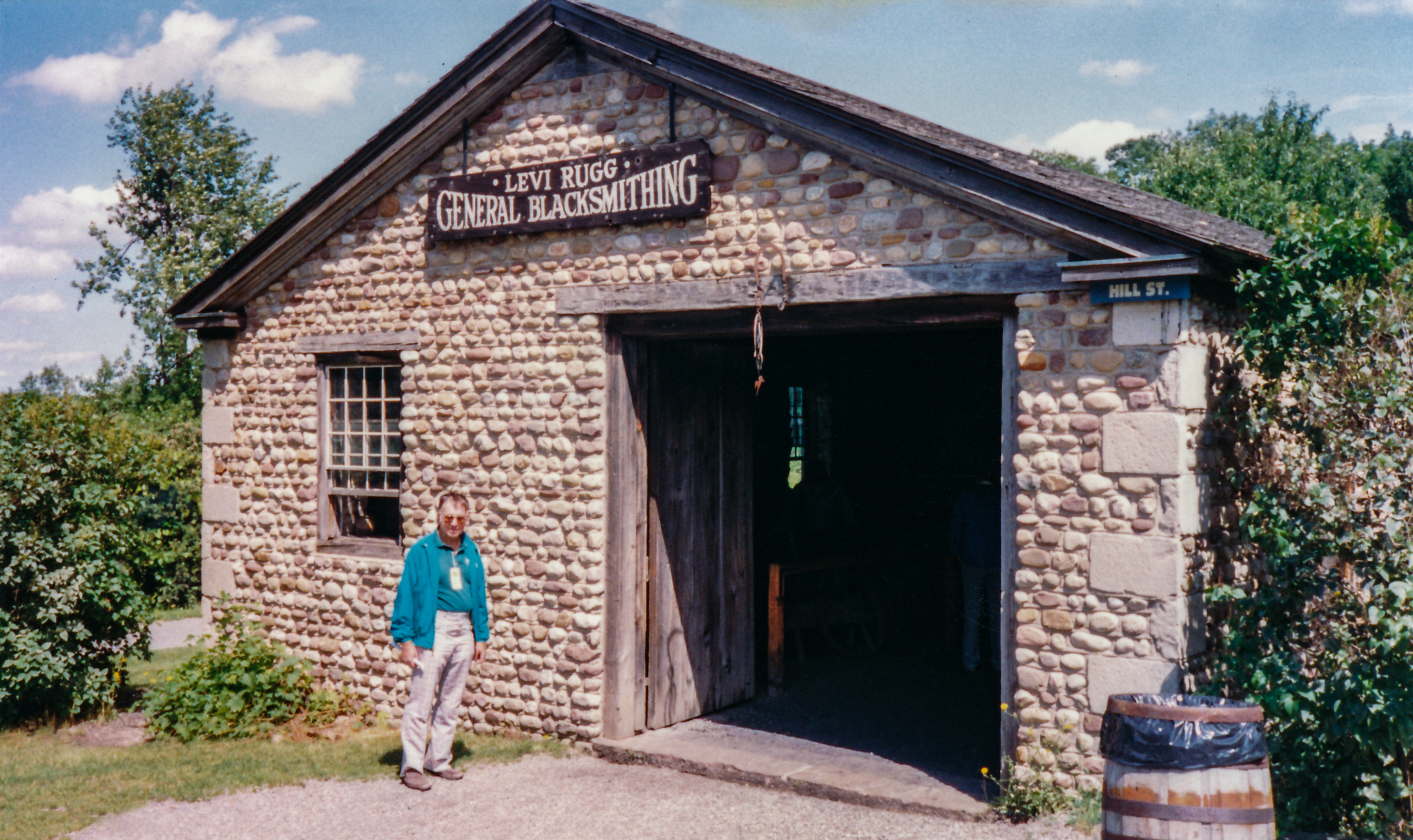 Whe-8 Genesee Country Museum 2.jpg ³ Aug 1994 | 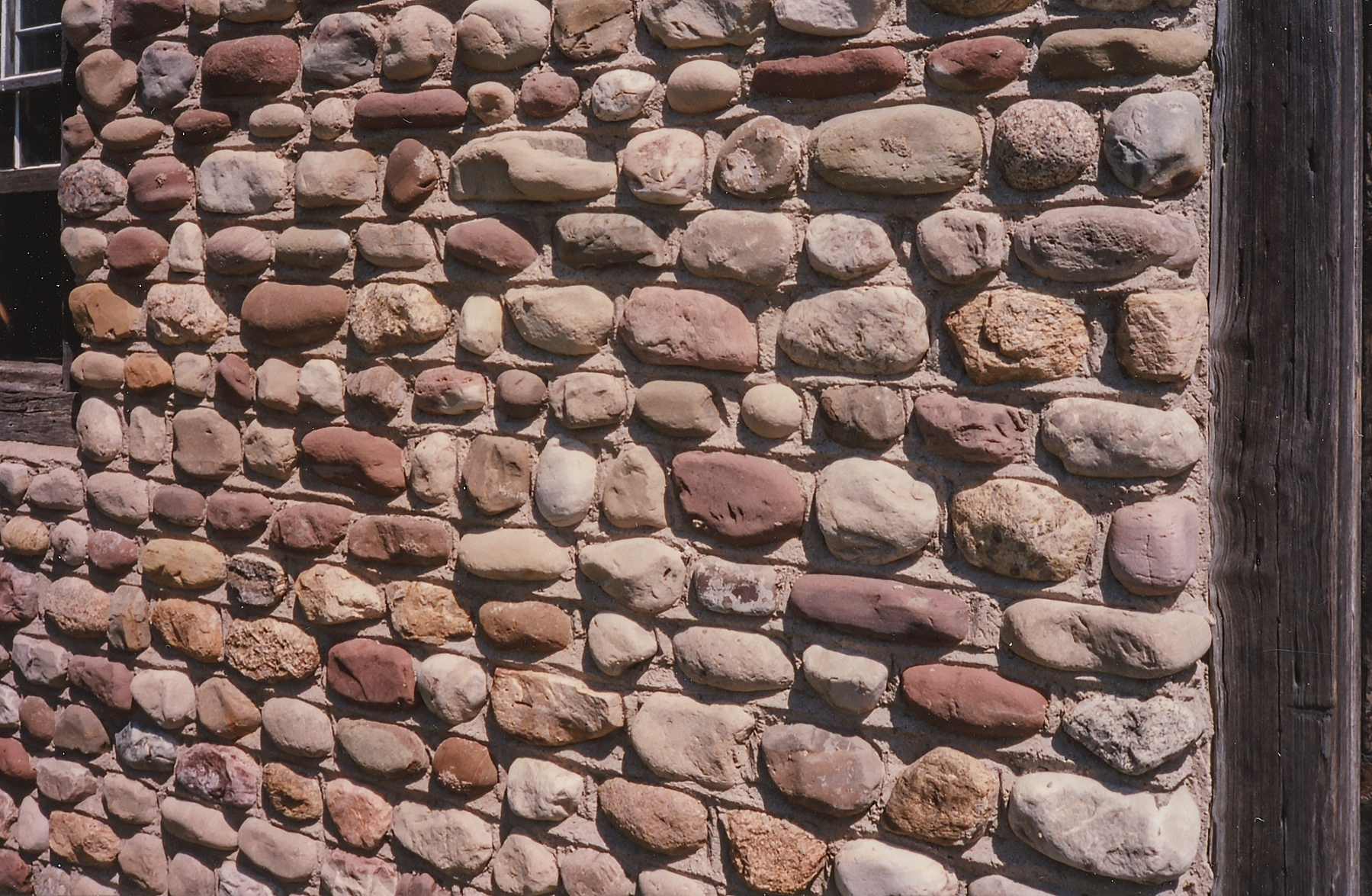 Whe-8 Genesee Country Museum.jpg ³ Aug 1994 | 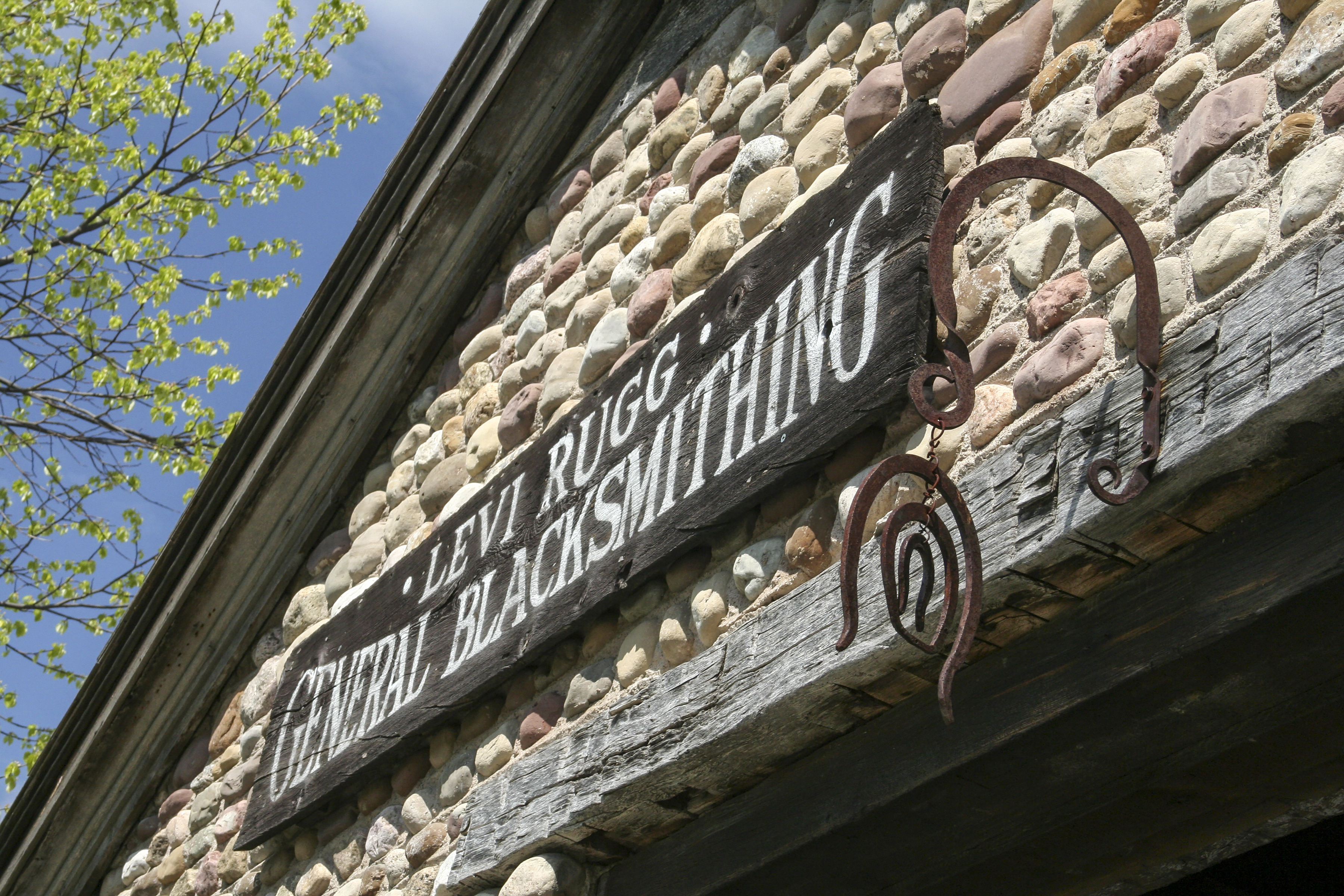 Whe_8_12_060507_0343.jpg 4 | 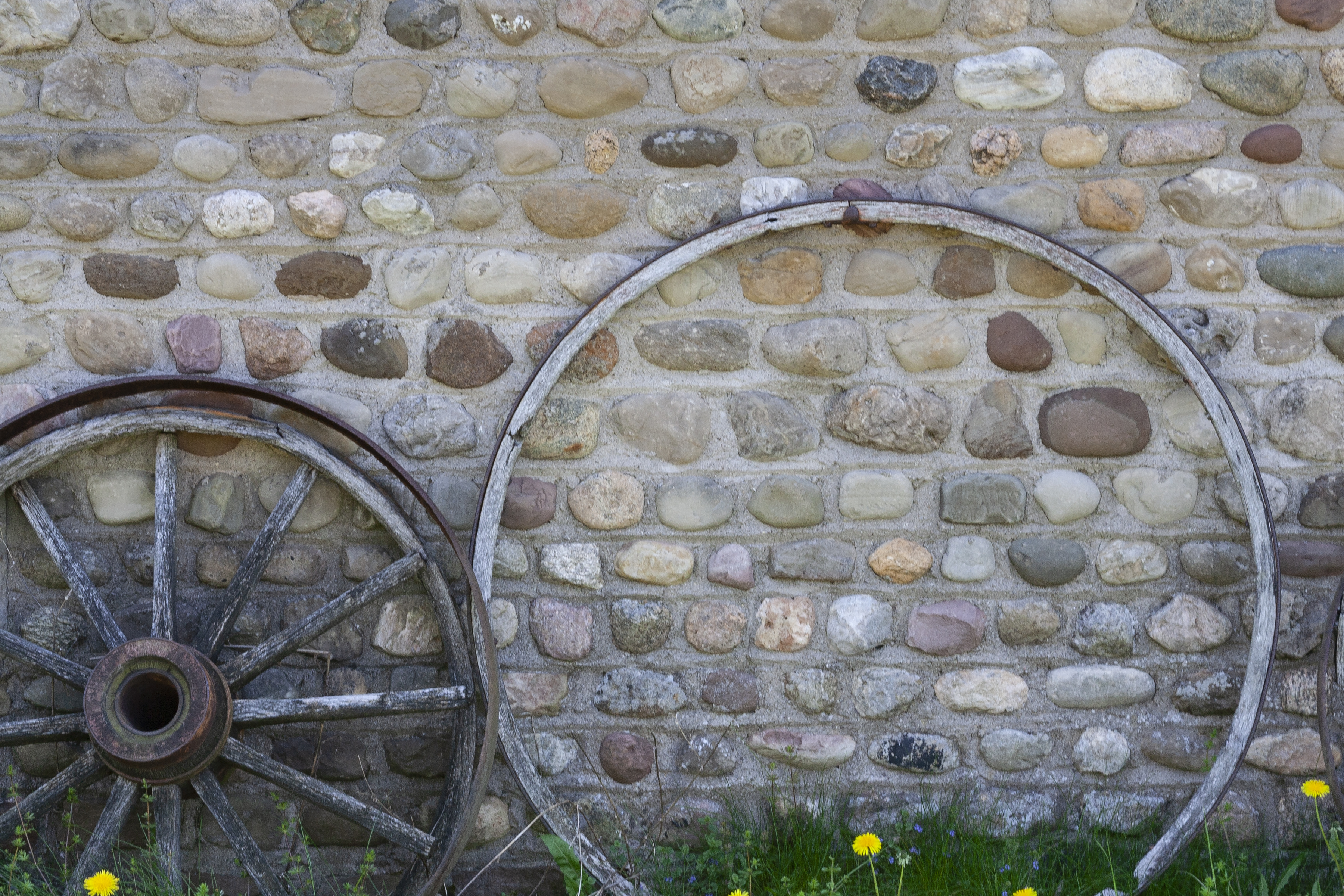 Whe_8_11_080529_5799.jpg 4 | 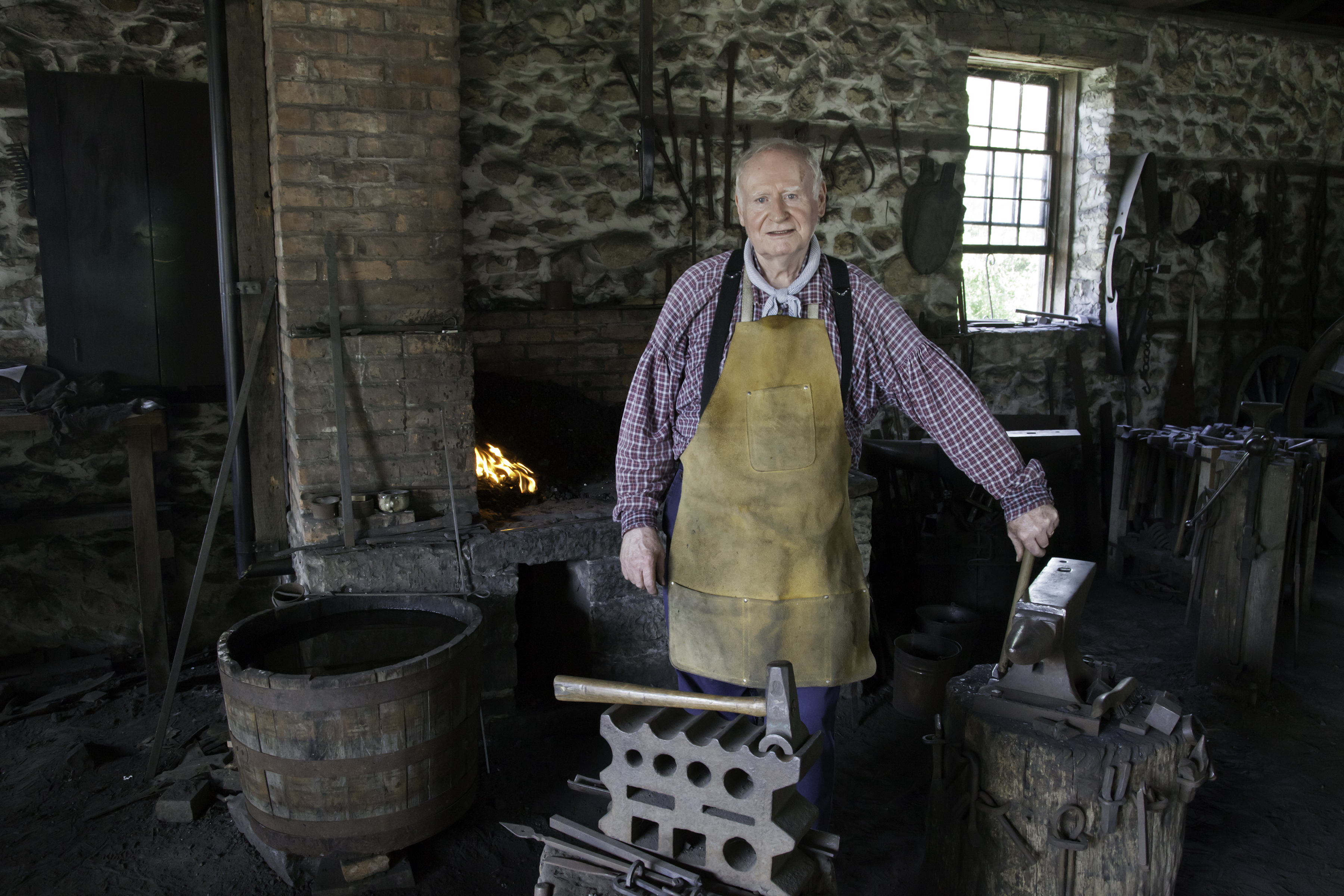 Whe_8_7_110804_0975.jpg 4 | 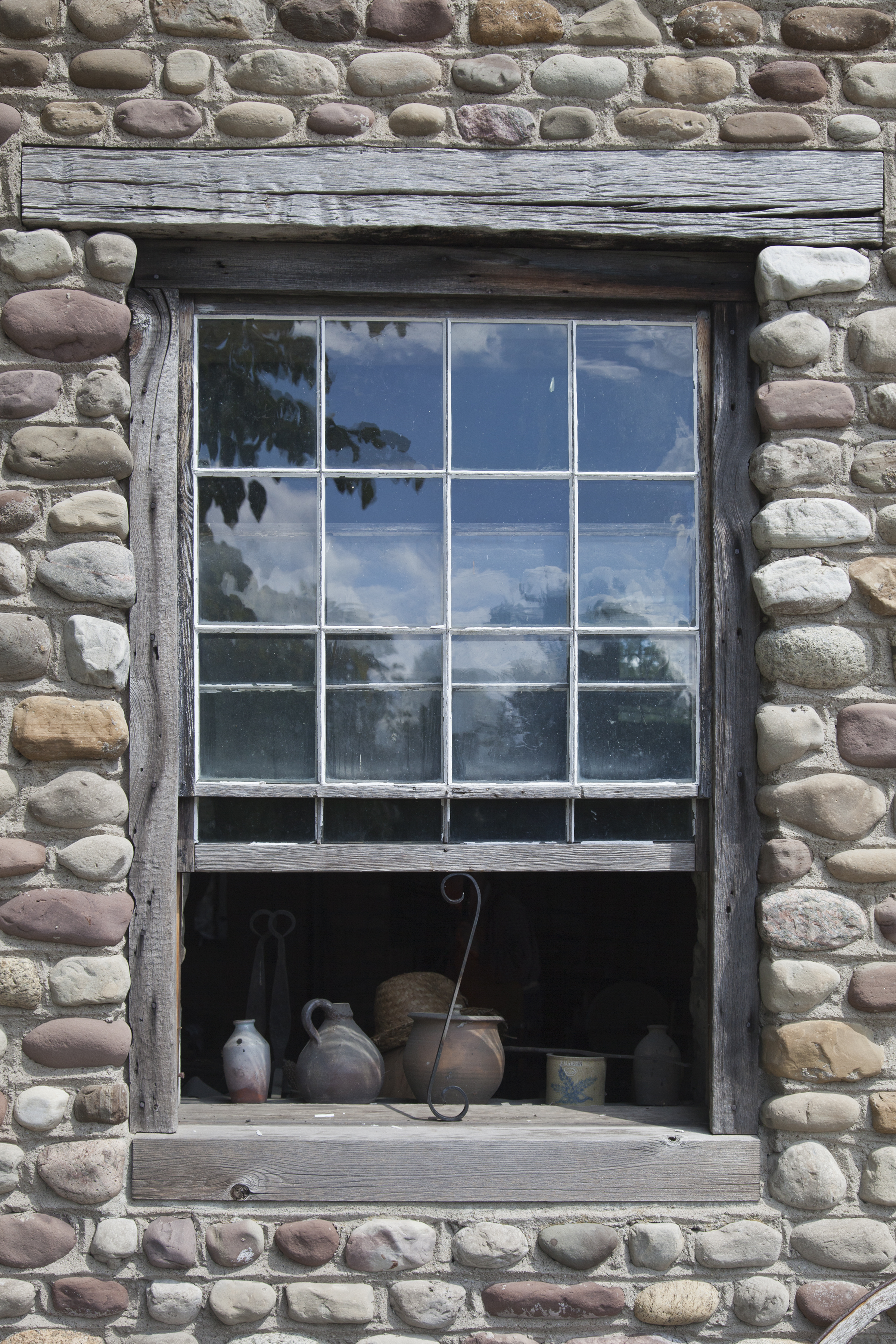 Whe_8_8_110804_0971.jpg 4 North side | 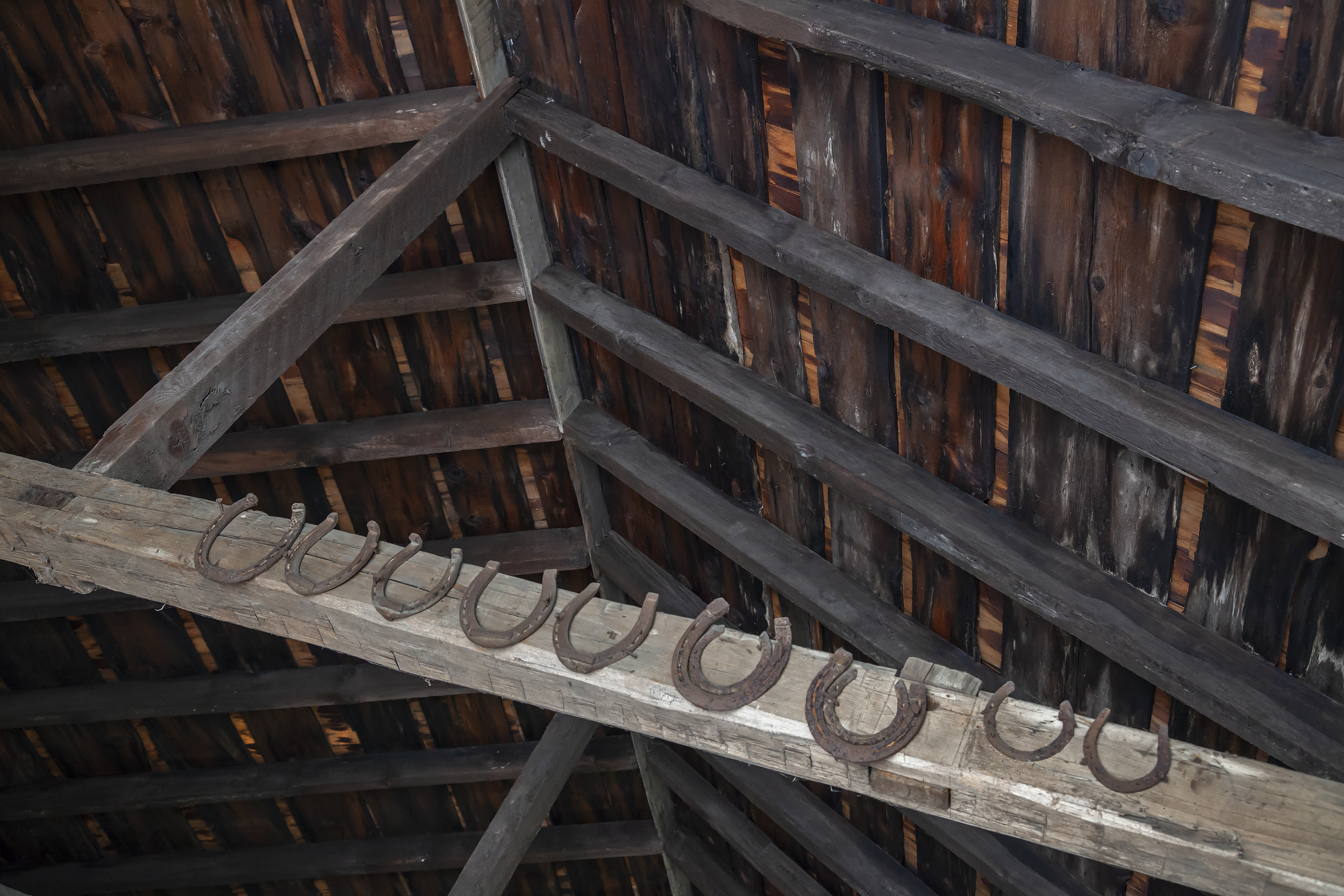 Whe_8_9_110804_0988.jpg 4 Horseshoes mounted to prevent good fortune from spilling out. | 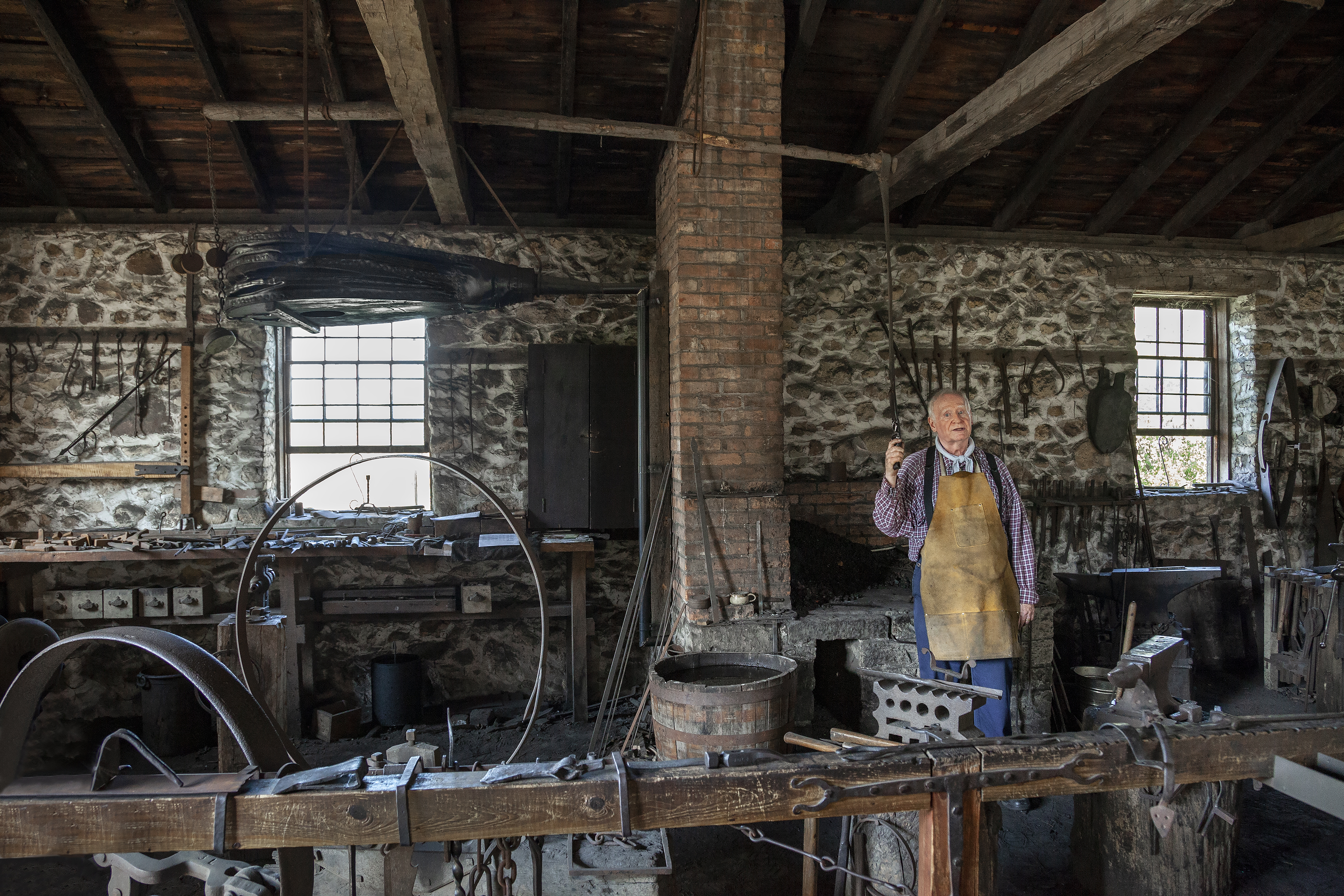 Whe_8_10_110925_4825.jpg 4 |
.jpg) Blacksmith shop, Genesee Country Village (formerly at Elba, Genesee County).jpg 5 | 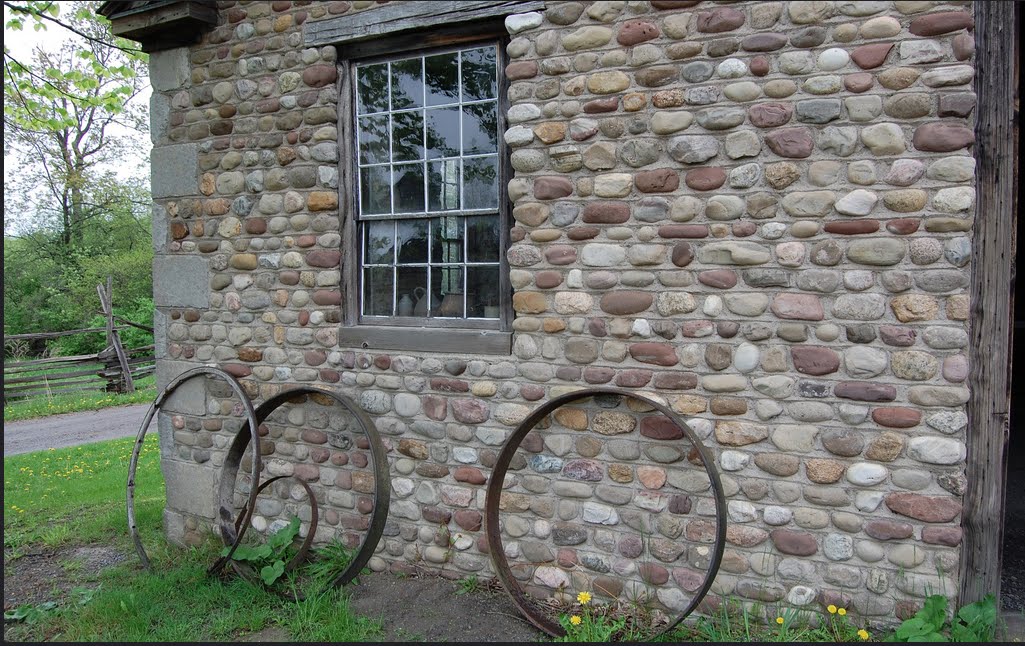 Rugg blacksmith shop 2.jpg 5 | 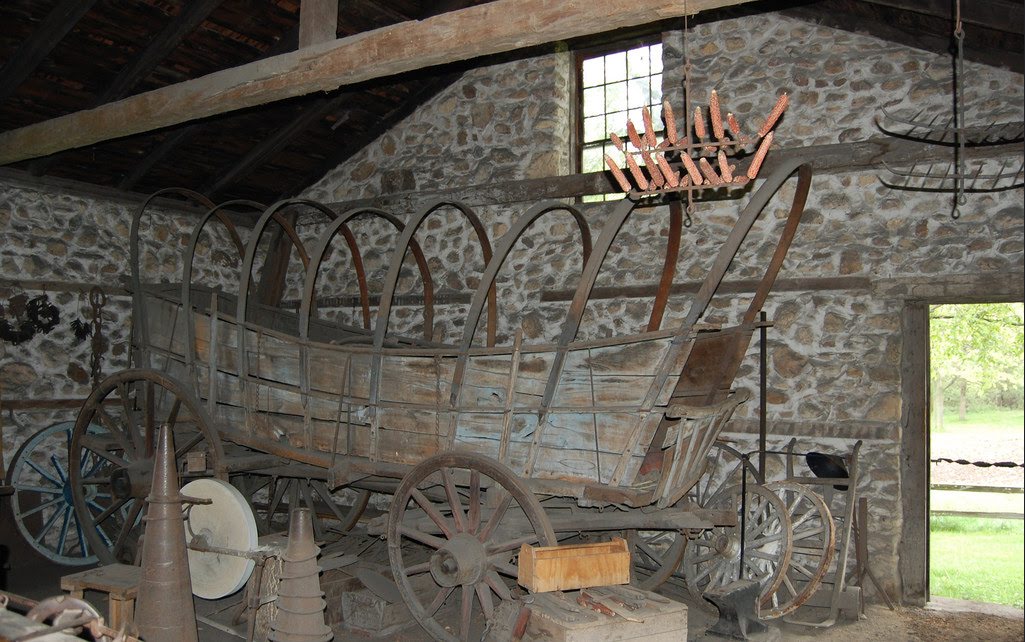 Blacksmith shop 4.jpg 5 Note the old Conestoga wagon. | 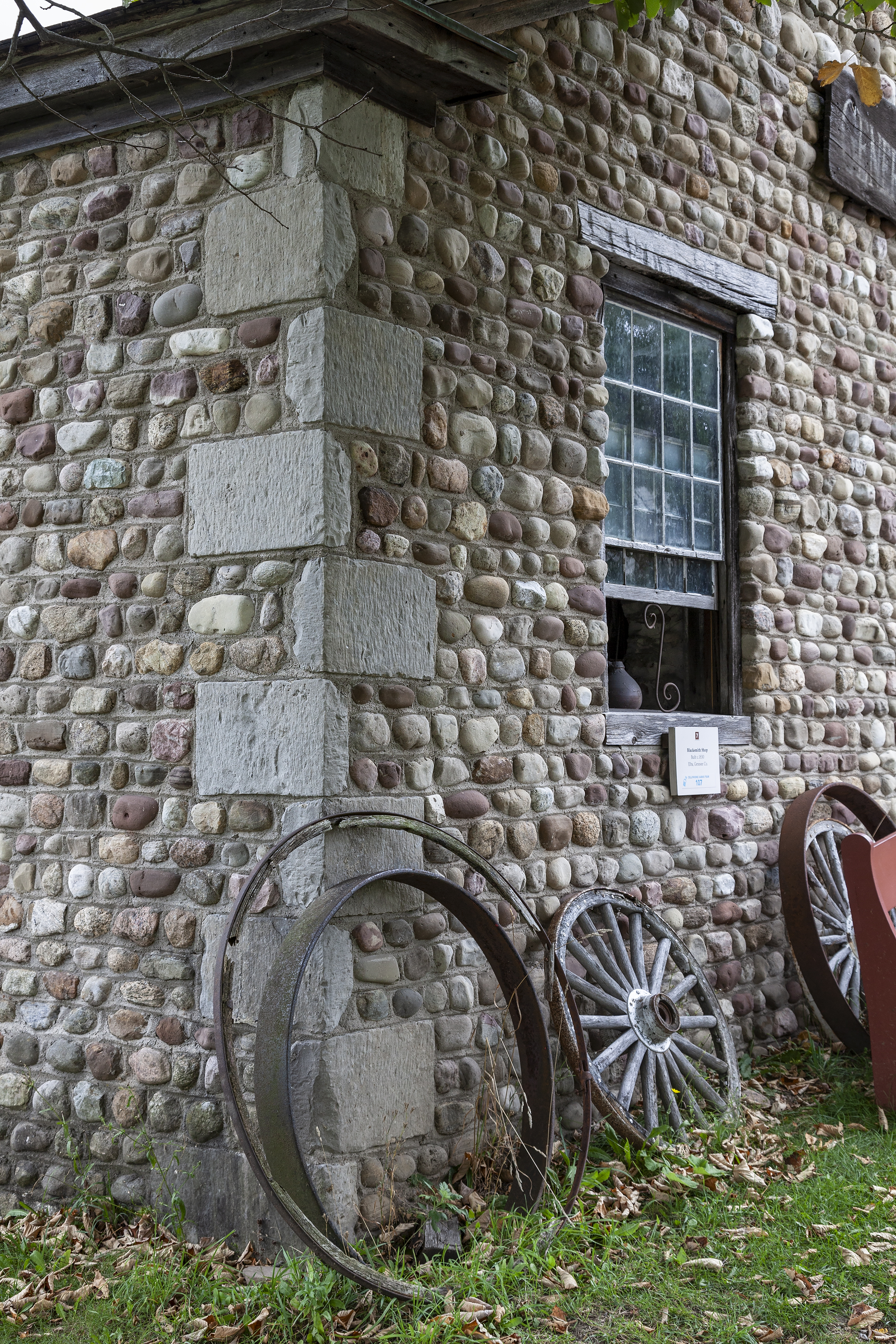 Whe_8_13_180922_5058.jpg 4 Northeast corner |
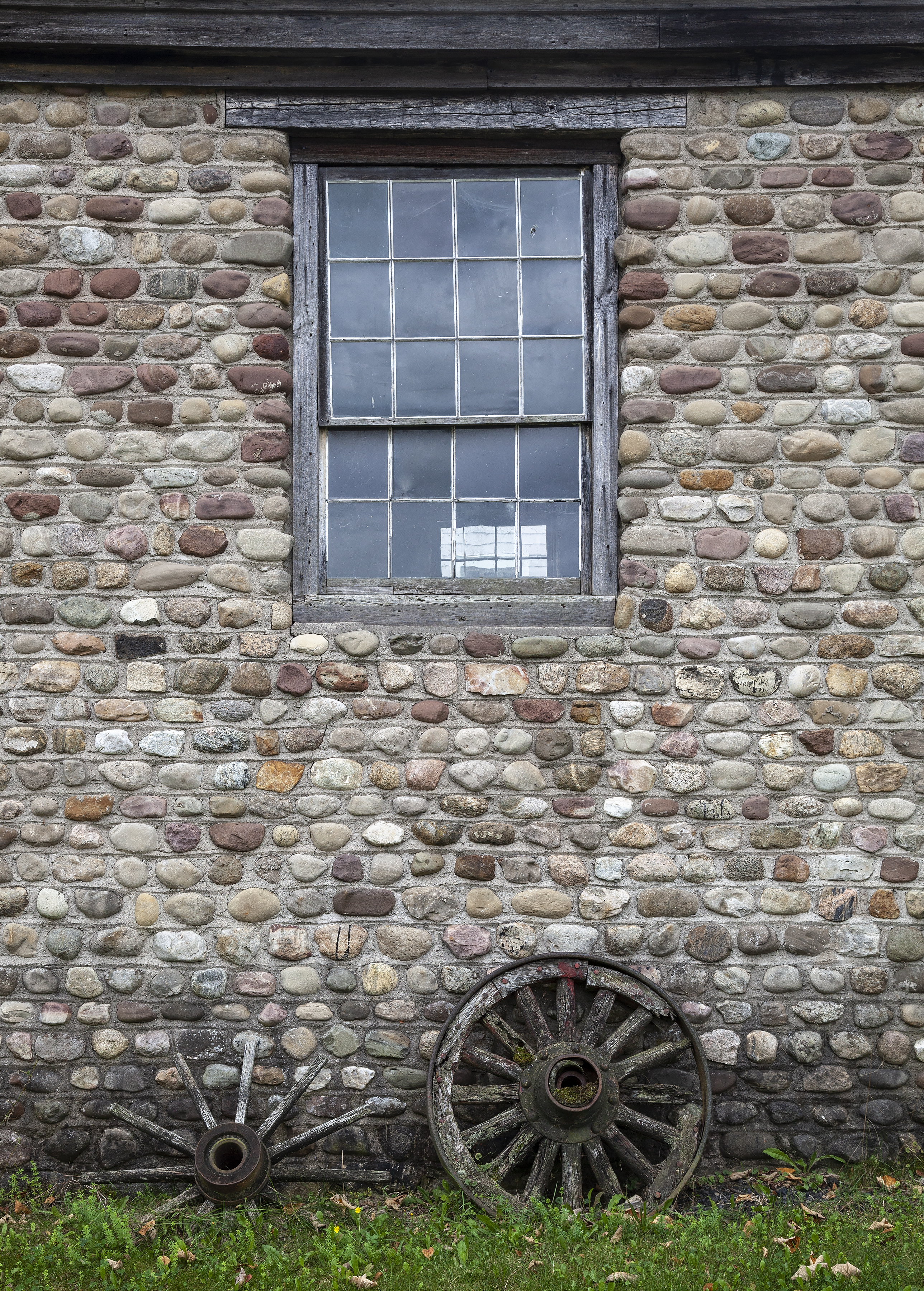 Whe_8_14_180922_5057.jpg 4 East side |
¹ Image courtesy Buffalo Courier-Express, Landmarks group arranges "A Tour Into the Past", by Bill Lamale and color photos by Frank Schifferle, page 8, 10/4/1966.
² Photograph courtesy Gerda Peterich.
³ Image courtesy Cobblestone Museum.
4 Photographs courtesy Gregory Lawrence. Dates YYMMDD; for example, 110804. Docent pictured is Mr. Jim Nichol, with his permission.
5 Photography courtesy Richard Palmer.
